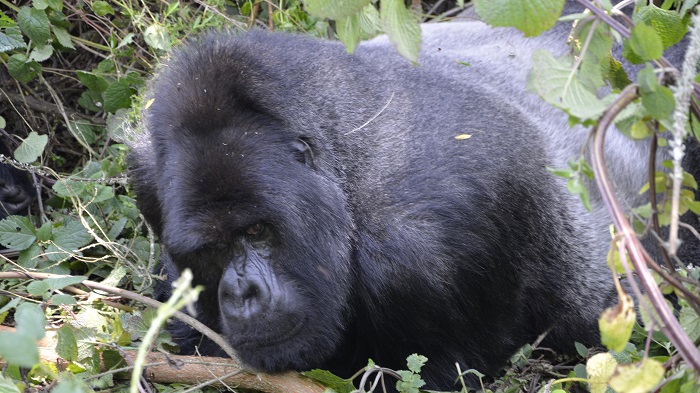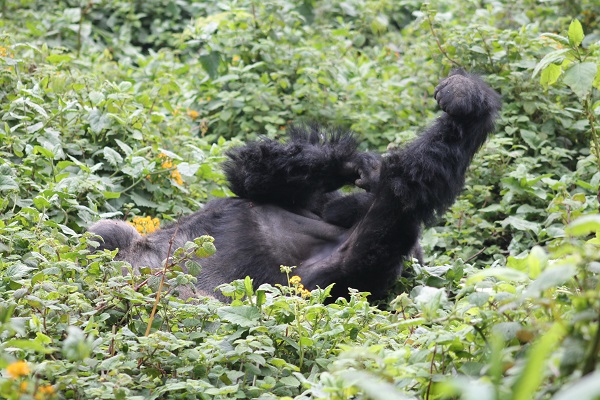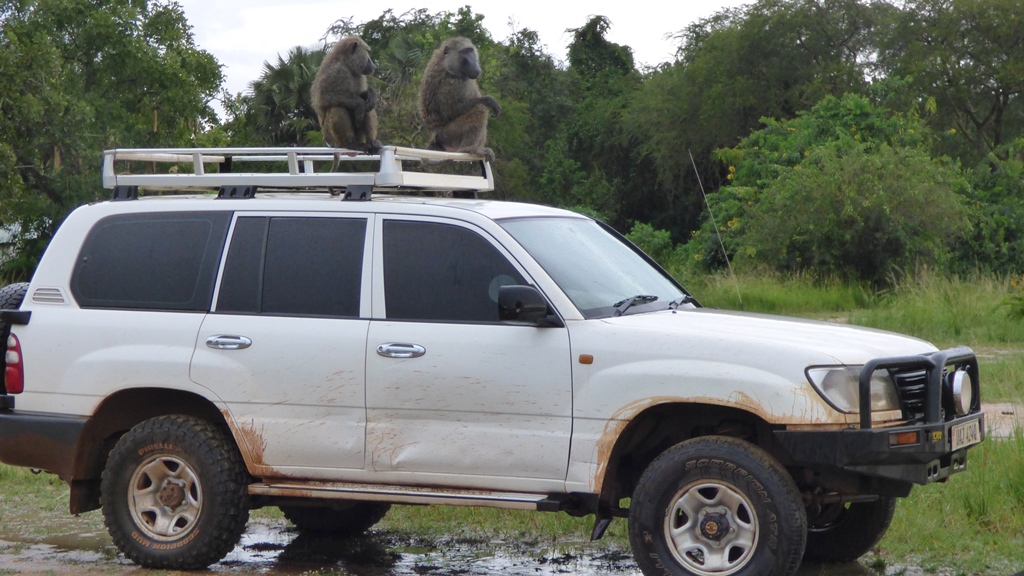What is a silverback gorilla?
A silverback gorilla is a male gorilla that has reached full adulthood or maturity. When the male gorilla reaches this stage of growth it develops a slivery gray lining on its back, or rather, the hairs on his back become slivery gray. Similar to how humans develop grey hair in their late adult life. But unlike humans, the female gorillas do not attain this slivery grey back.
The silvery gray back of the male gorilla looks silvery (contrasting beautifully with the dark black of the rest of the body) and thus the name “silverback gorilla”.
The male gorilla attains the prestigious “silverback” status between the age of 13 – 15 years. Before attaining the “silverback” status, the male gorilla goes through the following stages of growth;
- infant (0 – 4 years) that is still dependent on the mother still breastfeeding,
- juvenile ( 4 – 6 years) that has been weaned by the mother and becomes semi-independent,
- adolescence (6 – 8 years) who are not yet sextually mature
- sub-adult (8 – 10 years) who has become sexually active
- blackback male (10 – 13 years) sexually mature but not fully mature physically
- Silverback male (13+ year) fully mature
What is the size of the silverback gorilla?

The silverback gorilla is the biggest primate in the world. By 13 years the male gorillas that have now turned into silverbacks grow tremendously in size, achieving a size that is twice that of the adult female gorilla.
The silverback will reach a standing height of over 5 feet (1.5 meters), and weigh up to 450 pounds (204 kg)
What is the strength of the silverback gorilla

“How strong is a silverback gorilla?”. This is a curious question asked by a lot of people. Well, without a doubt the silverback gorilla is physically the strongest of the apes.
The strength of a silverback gorilla is estimated to be equivalent to the strength of 8 grown healthy men. If you know rugby union, this is the forwards group of one rugby team.
A silverback can easily dismember you by pulling your limps off your body with no effort. A silverback holding onto a part of your body such as an arm or leg would crush your bones in an instant.
The silverback fights by drilling his extremely powerful jaws into the adversary’s flesh and will instantly tear flesh and crush bones.
Is the silverback gorilla aggressive? How dangerous is it?
Naturally gorillas are docile primates that do not love violence. Peace means so much to the gorillas (a sheer contrast with chimpanzees).
Even with such immense strength, the silverback gorilla rarely engages in aggressive encounters, be it with other gorillas or other wildlife, unless if his group or authority is really threatened. His first reaction is too flee from any aggressive situation.
This none-aggressive nature of the silverback gorilla has earned it the tag “Gentle Giant”.
What do silverback gorillas eat?
Silverback gorillas or gorillas generally, are generally vegetarian feeding on leaves, fruits, stems, and roots of shrubs. The gorillas have also been observed to feed on insects or bugs that supplement on the vegetarian diet to get vital nutrients such as proteins and other essential minerals the gorillas may not get in vegetation.
The gorillas do not drink water. They get sufficient water from the vegetation they feed on.
Do the gorillas eat meat? There is only one incidence when gorillas eat meat and it is quite bizarre! Gorillas eat their dead babies. Shocking uh?! This logic behind this bizarre ritual by the gorillas that are thought to be vegetarian has been explained as way the efficient way gorillas can dispose of the dead baby gorilla’s body so that no prey gets to taste a baby gorilla. This way the gorillas are protecting their live infants from interest of other preys in the jungle.
What are the responsibilities of the silverback gorilla
The silverback gorilla is the dominant gorilla in the group (gorillas live in groups or call them families). He is the leader and protector of his group.
The silverback gorilla directs the daily activities of the group, that is, he leads the search of food, and determines where and when to spend the night in the forest.
The silverback gorilla also has the priority right to mate with the females.
Note that there can be more than one silverback gorilla in a group but only one of these is the dominant and the leader. Other silverback gorillas within the group may challenge the dominant silverback for leadership and if successful can take over the group. This happens when the dominant silverback gorilla has grown so old and frail and other potential silverbacks get to notice this challenge him. Other than the possibility of facing a challenge from within, the dominant silverback can also be challenged by lone silverback wondering in the jungle looking for a group to take over.
Where to see the silverback gorillas.
Gorillas are endemic to the African continent and there are two species, the western gorillas in western Africa, and the eastern gorillas in central/eastern Africa. The eastern gorillas (mountain gorillas) are more popular due to the gorilla trekking activity offered in Uganda, Rwanda and Congo, that allows tourists to trek in the jungles to see the gorillas. Coming face to face with the enormous silverback gorilla without any barrier is one of the most beautiful moments that are hard to explain. You can book a gorilla tour to see gorillas in Rwanda’s Volcanoes National Park and Uganda’s Bwindi National Park and Mgahinga National Park.
Leave a comment Cancel reply
Archives
- March 2025 (1)
- February 2025 (1)
- January 2025 (1)
- November 2024 (2)
- October 2024 (3)
- May 2024 (1)
- February 2024 (1)
- January 2024 (2)
- November 2023 (2)
- September 2023 (1)
- July 2023 (8)
- June 2023 (14)
- May 2023 (1)
- April 2023 (1)
- March 2023 (3)
- February 2023 (6)
- January 2023 (6)
- December 2022 (1)
- November 2022 (1)
- October 2022 (2)
- September 2022 (1)
- August 2022 (1)
- May 2022 (17)
- April 2022 (5)
- March 2022 (7)
- February 2022 (3)
- January 2022 (7)
- December 2021 (7)
- November 2021 (2)
- October 2021 (1)
- September 2021 (2)
- August 2021 (2)
- July 2021 (6)
- June 2021 (1)
- May 2021 (4)
- April 2021 (3)
- March 2021 (2)
- February 2021 (2)
- January 2021 (14)
- November 2020 (2)
- September 2020 (1)
- March 2020 (1)
- February 2020 (1)
- August 2019 (1)
- September 2016 (1)
- June 2016 (1)
- May 2016 (1)

